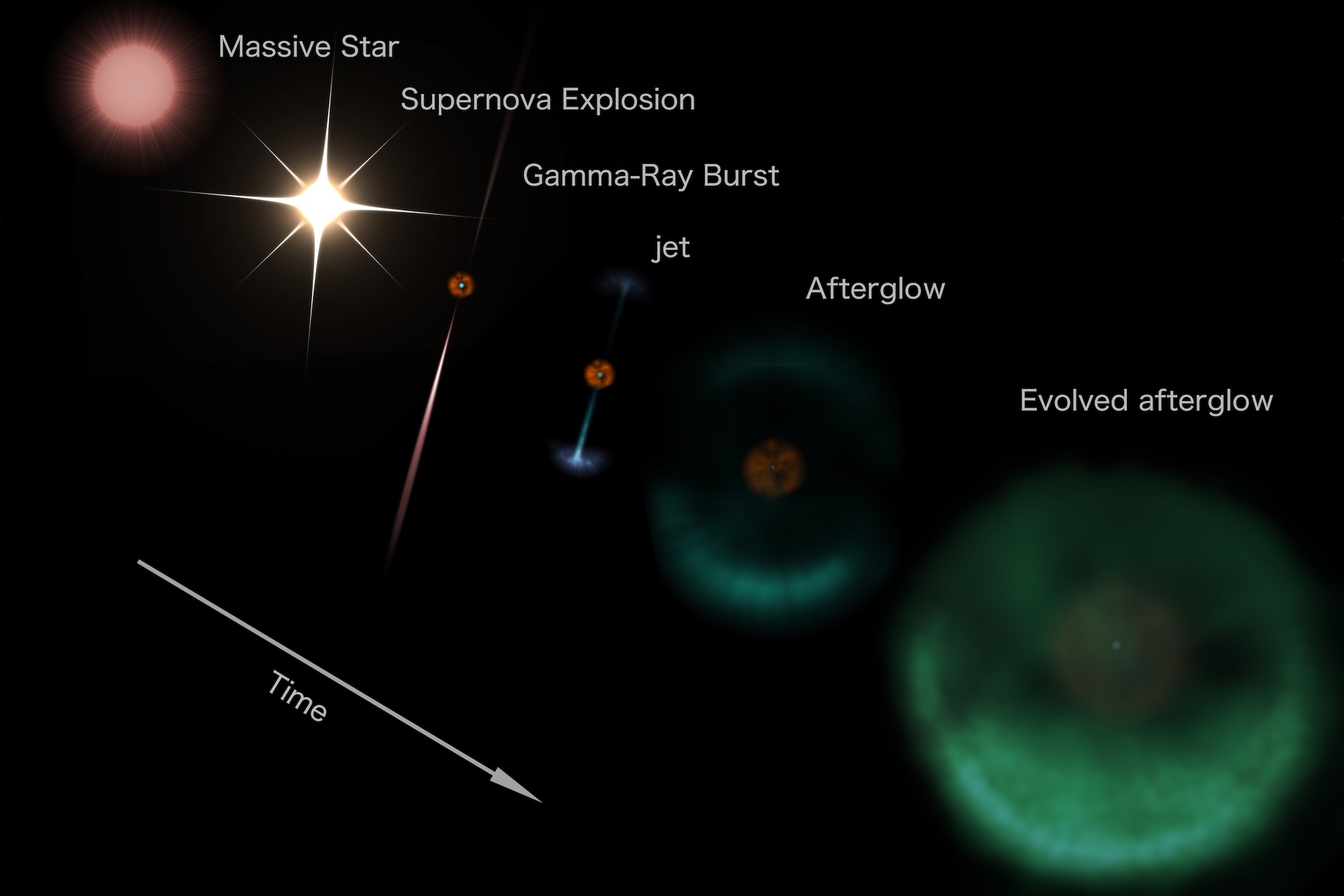Daily Image
25-06-2019An orphan gamma-ray burst afterglow
| Submitter: | Benito Marcote, Kenzie Nimmo, et al. |
| Description: | FIRST J1419+3940 is a decaying radio source for the last 30 years, and is located in an environment that resembles of FRB 121102. EVN observations have revealed an expansion which suggests that the source is the orphan afterglow of a long gamma-ray burst. When the biggest stars in the Universe reach the end of their lives, they collapse due to their own gravity and produce a supernova explosion. In some cases, they also emit a long gamma-ray burst (GRB) lasting seconds or minutes. This GRB is only visible if pointing directly towards the Earth. There is, however, a long-lived afterglow that expands at relativistic velocities and, after isotropization, can be visible at radio frequencies even if the gamma-ray emission was not observed. This is termed an "orphan" GRB afterglow, but so far there were no solid detections of such objects. FIRST J1419+3940 was recently discovered as a decaying radio transient located in an environment with similar properties to that of the first repeating fast radio burst, FRB 121102. FIRST J1419+3940 is, therefore, an interesting source to search for FRBs. We conducted observations with the European VLBI Network (EVN) in September 2018 to study the source on milliarcsecond scales and search for FRBs with the Effelsberg single-dish. We detected FIRST J1419+3940 as a compact radio source with a size of around 1.6 pc (the angular diameter distance to the source is 83 Mpc). These results confirm that the radio emission is nonthermal and imply an average expansion velocity of around 0.1c, which is consistent with a GRB jet expansion. These results appear in Marcote et al. (2019, ApJL, 876, L14) (see also the corresponding entry at the JIVE news). |
| Copyright: | Benito Marcote |
| Tweet |  |
